Hedge funds cut NFLX, keep big bets on MSFT, AMZN, add NVDA
Introduction & Market Context
Roche Holding AG (SIX:ROG) reported a 6% increase in group sales for the first quarter of 2025, with total revenue reaching CHF 15.4 billion compared to CHF 14.4 billion in the same period last year. The growth was primarily driven by an 8% increase in pharmaceutical sales, which offset flat performance in the diagnostics division. The company maintained its full-year guidance despite facing headwinds from healthcare pricing reforms in China and loss of exclusivity (LOE) impacts of approximately CHF 1.2 billion expected for 2025.
CEO Thomas Schinecker presented the results on April 24, 2025, highlighting the company’s consistent growth trajectory over recent quarters and emphasizing the increasing contribution of Roche’s young portfolio, which now represents 59% of total revenue.
As shown in the following chart detailing Q1 2025 sales performance by division:
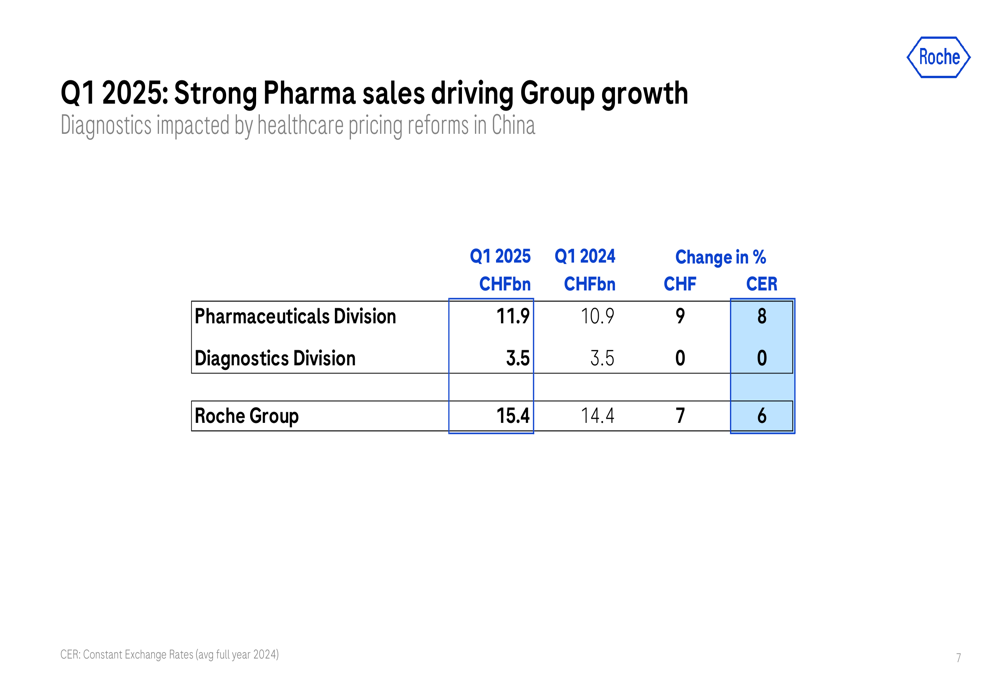
Quarterly Performance Highlights
Roche’s pharmaceutical division delivered strong performance with sales of CHF 11.9 billion, representing a 9% increase in Swiss francs and 8% at constant exchange rates compared to Q1 2024. This growth was achieved despite a CHF 222 million negative impact from loss of exclusivity for certain products.
In contrast, the diagnostics division reported flat sales of CHF 3.5 billion, primarily due to healthcare pricing reforms in China that resulted in a CHF 136 million negative impact. When excluding China, the diagnostics division would have shown modest growth.
The following visualization illustrates the key growth drivers across Roche’s portfolio:
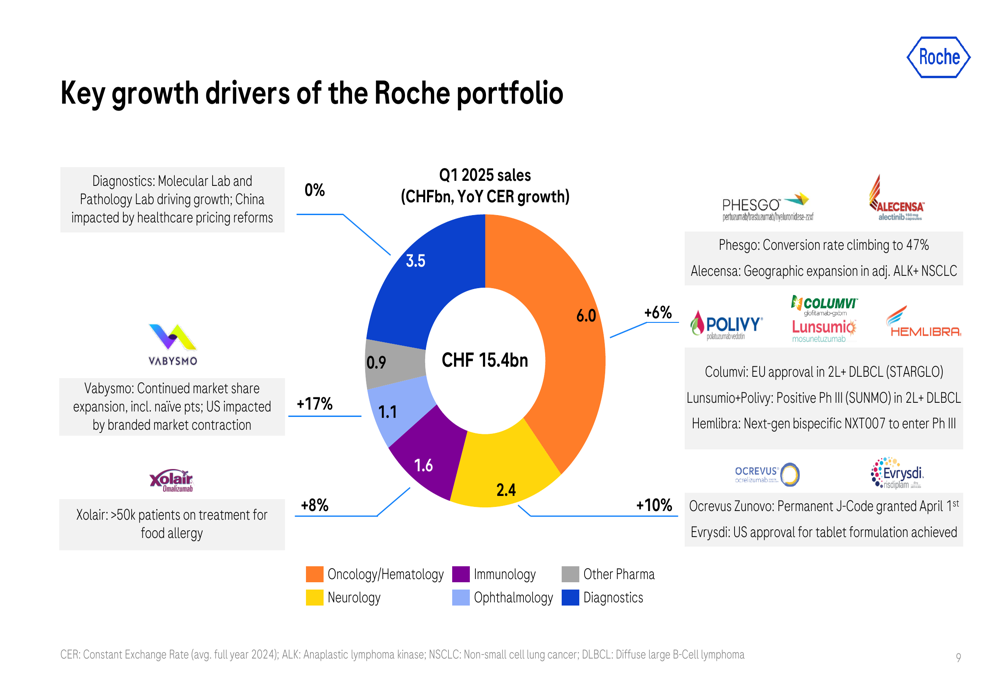
Currency fluctuations provided a slight positive impact of 1.5% to overall sales growth, primarily driven by the strengthening of the US dollar against the Swiss franc. However, Roche expects currency effects to turn negative later in the year, with a neutral impact projected for the full year 2025.
The company’s young portfolio continues to be the primary growth engine, now representing 59% of total revenue compared to 55% in Q1 2024. This evolution is illustrated in the following chart:
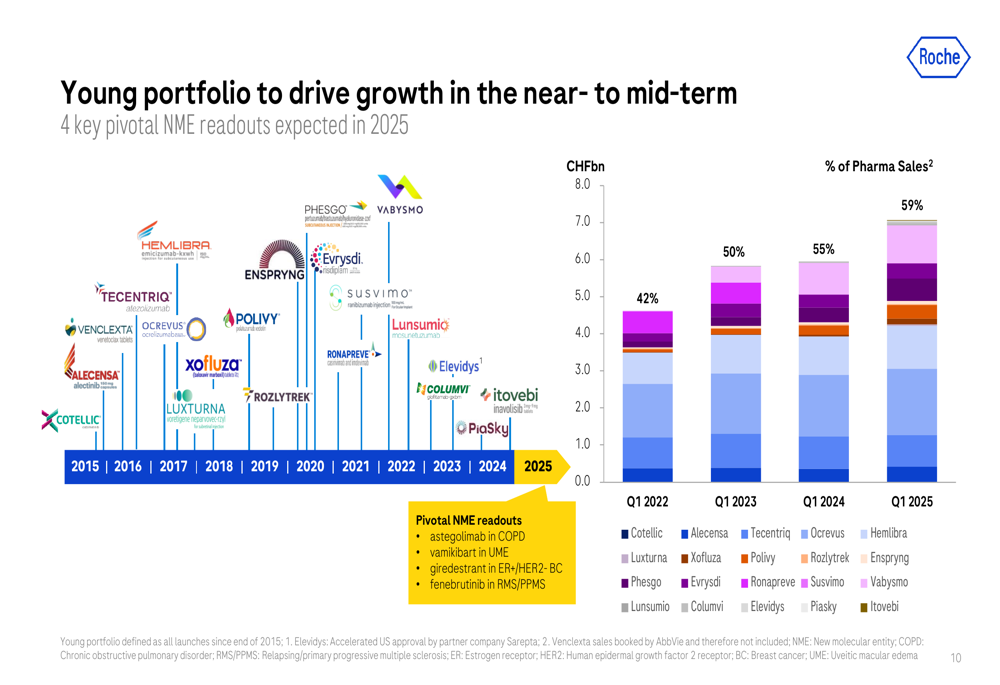
Strategic Initiatives & Pipeline
Roche emphasized its commitment to investing in the United States, announcing plans to allocate USD 50 billion into R&D and manufacturing facilities by the end of the decade. The company currently operates 13 manufacturing sites and 15 R&D centers across the US, with additional facilities under development.
The pharmaceutical pipeline remains robust, with multiple potential blockbusters in late-stage development. The company highlighted four key pivotal new molecular entity (NME) readouts expected in 2025, including astegolimab for COPD, vamikibart for UME, giredestrant for ER+/HER2- breast cancer, and fenebrutinib for multiple sclerosis.
The following comprehensive pipeline chart illustrates Roche’s development portfolio across various therapeutic areas:

Among the most promising pipeline candidates, Roche showcased Trontinemab, a novel treatment for Alzheimer’s disease that has demonstrated rapid and deep amyloid clearance in clinical trials. According to phase 1/2 data, 81% of patients on the 3.6 mg/kg dose achieved amyloid PET negative status within 28 weeks, suggesting potentially superior efficacy compared to existing treatments. Phase III trials are set to begin in 2025.
The following visualization illustrates Trontinemab’s mechanism of action and clinical results:
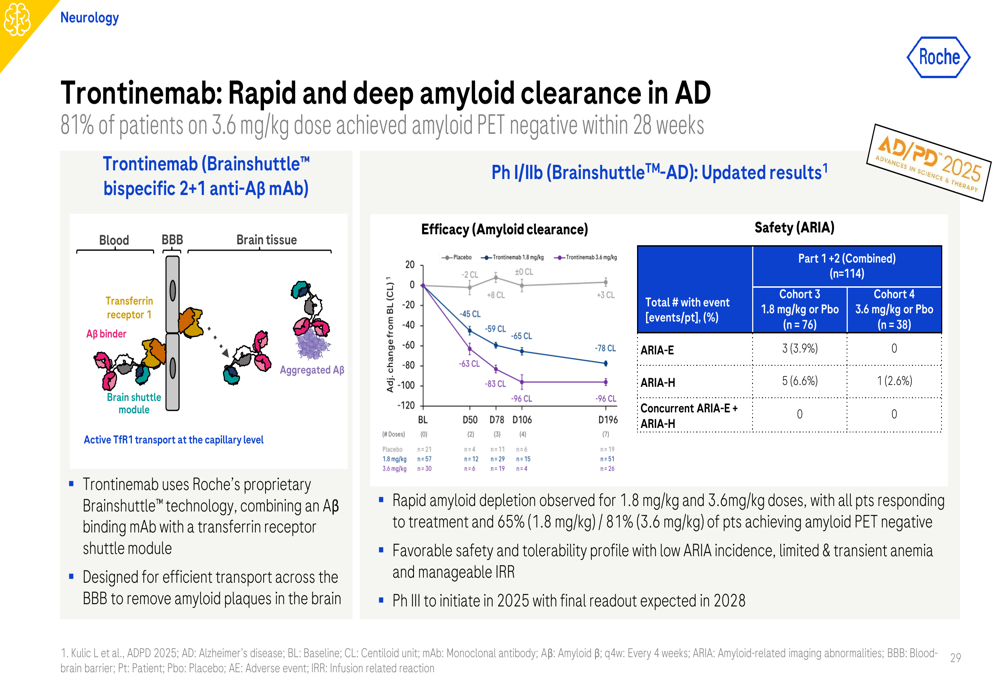
In ophthalmology, Vabysmo continues to gain market share, achieving leadership position in neovascular age-related macular degeneration (nAMD). The product has shown strong uptake of its pre-filled syringe formulation, with 95% adoption in the US market. Recent launches in additional markets, including China, are expected to further drive growth.
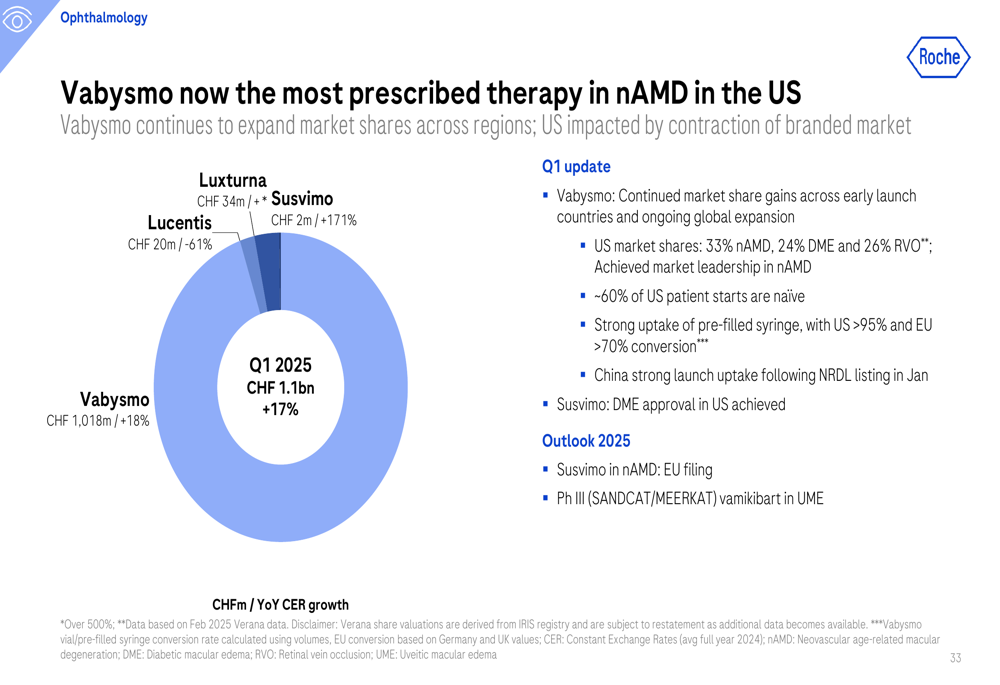
Roche is also expanding its presence in the cardiovascular, renal, and metabolism (CVRM) space, with Petrelintide emerging as a promising candidate for obesity treatment. Following the acquisition of Carmot Therapeutics, Roche is positioning Petrelintide as both a monotherapy and in fixed-dose combination with CT-388, targeting high-quality weight loss with improved tolerability compared to existing treatments.
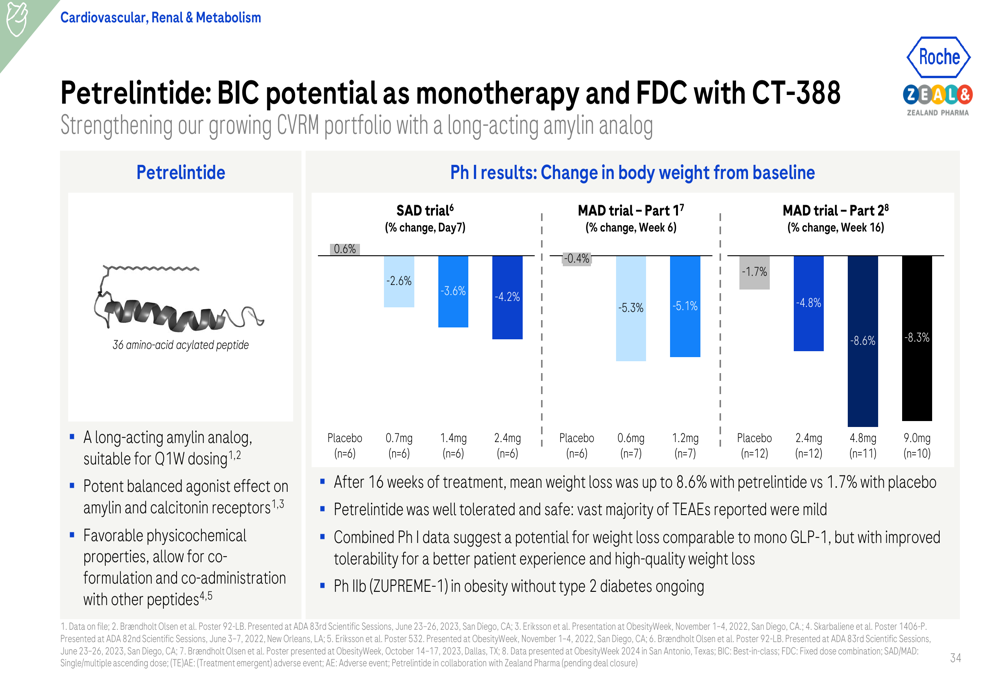
In diagnostics, Roche is preparing to unveil its novel SBX sequencing technology, which combines improved DNA molecule signaling with high-throughput sensor modules to deliver faster and more accurate genomic sequencing. The technology is capable of processing seven human genomes per hour with results available in under seven hours.
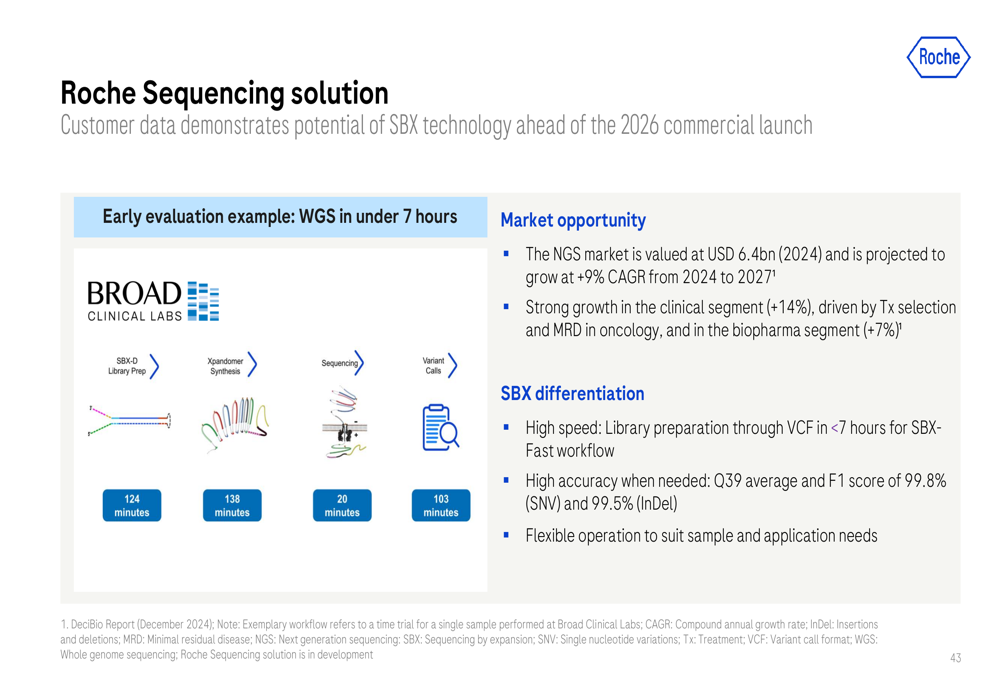
Forward-Looking Statements
Roche confirmed its 2025 guidance, expecting mid-single digit sales growth and high single digit core EPS growth for the full year. The company also plans to further increase its dividend in Swiss francs, continuing its long-standing policy of annual dividend increases.
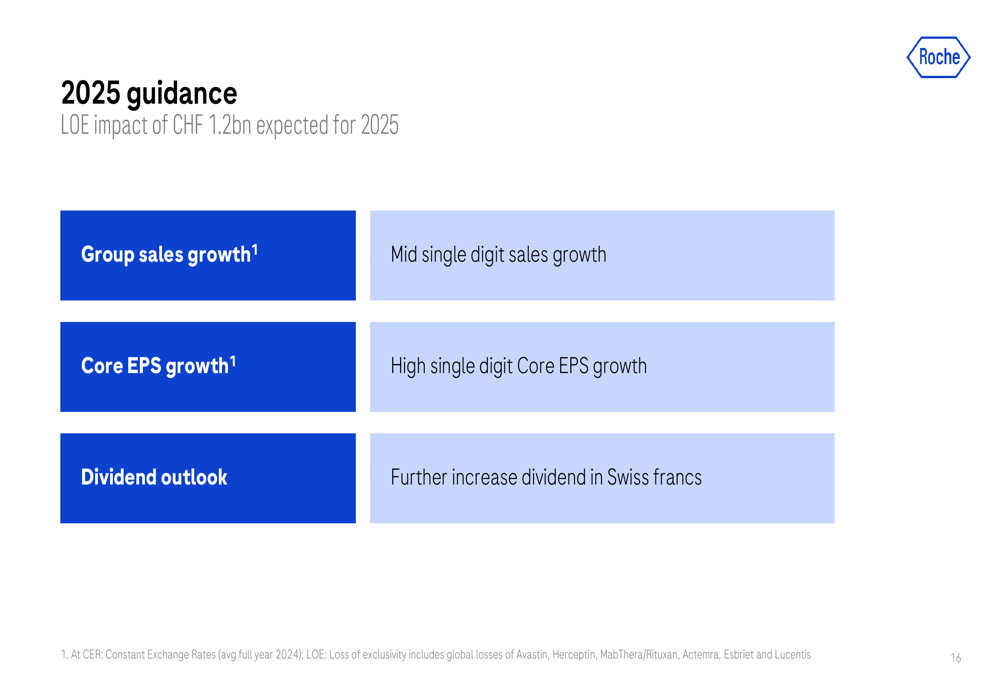
The remainder of 2025 is expected to bring significant news flow, with multiple regulatory decisions and clinical trial readouts anticipated across both pharmaceutical and diagnostic divisions. Key upcoming events include potential approvals for Columvi, Lunsumio, and Itovebi, as well as Phase III results for several pipeline candidates.
The following timeline outlines expected regulatory submissions for 2025 and beyond:
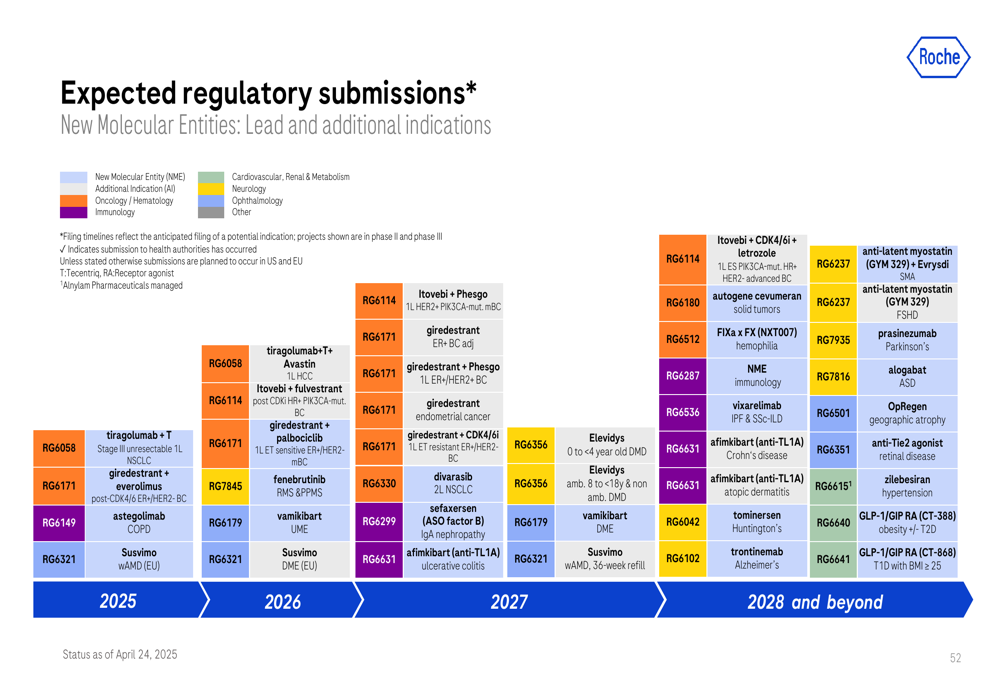
Roche’s management expressed confidence in the company’s ability to navigate challenges such as loss of exclusivity and pricing pressures through continued innovation and pipeline advancement. With 59% of revenue now coming from its young portfolio and multiple potential blockbusters in late-stage development, Roche appears well-positioned to maintain growth momentum despite competitive pressures in key therapeutic areas.
The company’s diversified approach across pharmaceuticals and diagnostics, combined with strategic investments in high-growth areas such as CVRM and oncology, underscores its commitment to long-term sustainable growth through innovation-driven healthcare solutions.
Full presentation:
This article was generated with the support of AI and reviewed by an editor. For more information see our T&C.
